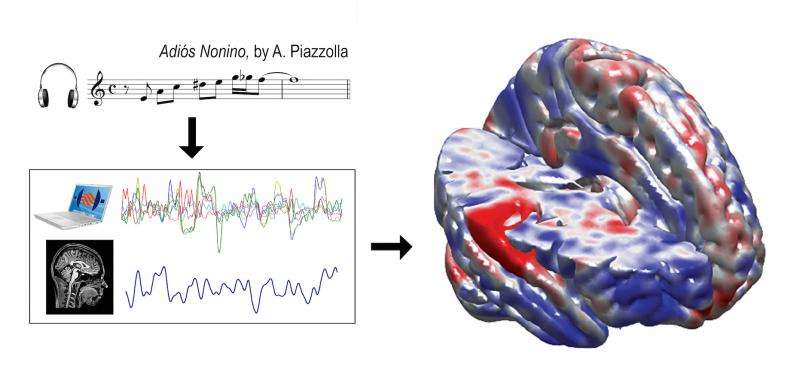Reproducible neuroscience with real tango Consonant results resonate in the brain

Most neuroscientific studies rely on a single experiment and assume their findings to be reliable. However, the validity of this assumption needs to be tested before accepting the findings as the ground truth. Indeed, the lack of replication studies in addition to the inconsistency of neuroimaging findings severely limits the advancement of knowledge in the field of neuroscience, all of which has recently become a hot topic within the neuroscientific community.
Concerned about this state of affairs, researchers at the Finnish Centre for Interdisciplinary Music Research (CIMR), University of Jyväskylä, in Finland, and from Aarhus University, in Denmark, aimed to replicate previous findings on how the brain processes music using a novel, naturalistic free listening context. Their results, published this month in Neuroimage, demonstrate that laboratory conditions resembling real-life contexts can yield reliable results, making findings more ecologically valid. "The more we can simulate reality in a lab in a reliable way, the more true‑to‑life the findings will be, and this is critical to modelling the way the brain actually understands the world", sums up Doctoral Student Iballa Burunat, the lead author of the study.
The research team employed an identical methodology as in the original study, but using a new group of participants. As in the original study, participants had to just listen to the musical piece Adiós Nonino by A. Piazzolla. Researchers assessed how similar the observed brain activity was between the original and the new study. Replicating the experiment allowed the researchers to fine-tune the findings of the previous study, concluding what brain areas are involved in the processing of different musical elements, like tonality, timbre, and rhythm, and how accurately the neural correlates could be replicated for each of these musical elements. For instance, they observed that high‑level musical features, such as tonality and rhythm, were less replicable than low‑level (timbral) ones. "One reason for this may be that the neural processing of high‑level musical features is more sensitive to state and traits of the listeners compared to the processing of low‑level features, which may hinder the replication of previous findings", says Academy Professor Petri Toiviainen, from the University of Jyväskylä, a co-author of the study.
When listening to a piece of music, we can't separate its auditory characteristics from its affective, cognitive, and contextual dimensions. It is precisely the integration of all these aspects that gives coherence to our listening experience. This is why taking a more naturalistic approach makes neuroscience more faithful to reality, a goal that a fully controlled setting that uses very simple and artificially created sounds falls short of. The success in replicating these findings should encourage scientists to move towards more real‑life paradigms that capture the complexity of the real world.
"The neuroscientific community needs to challenge the current scientific model driven by dysfunctional research practices tacitly encouraged by the "publish or perish" doctrine, which is precisely leading to the low reliability and the high discrepancy of results", states Iballa Burunat. The authors stress that more incentives are needed for replicating experiments, and agree that scientific journals should more often than not welcome replication studies to ensure that published research is robust and reliable.
More information: "The reliability of continuous brain responses during naturalistic listening to music," NeuroImage, Volume 124, Part A, 1 January 2016, Pages 224-231, ISSN 1053-8119, dx.doi.org/10.1016/j.neuroimage.2015.09.005




















